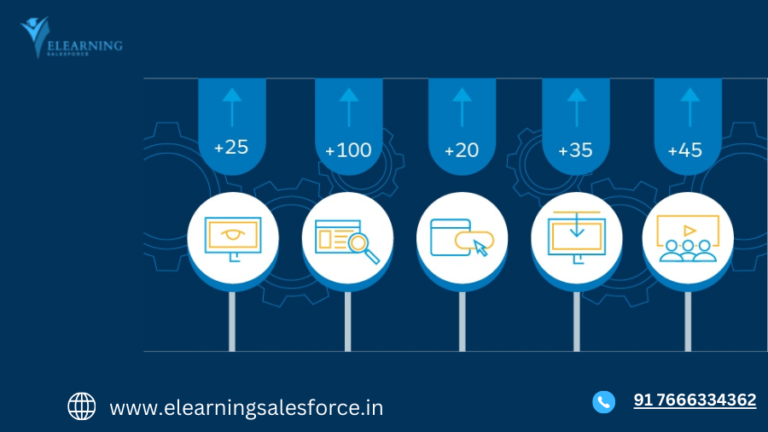Introduction
Salesforce Workflow Rules: In the dynamic realm of Customer Relationship Management (CRM), efficiency is paramount. Salesforce, a leading CRM platform, empowers organizations to streamline their processes and enhance productivity through various tools and features. One such powerful automation tool is Salesforce Workflow Rules. In this blog, we’ll explore the ins and outs of Salesforce Workflow Rules, understanding their significance, best practices, and how they can revolutionize your business processes.
Understanding Salesforce Workflow Rules
Salesforce Workflow Rules are a robust automation feature that allows organizations to define and automate standard internal procedures to save time across their platform. With Workflow Rules, you can set up standard internal procedures to initiate standard internal processes to save time across your org. These rules consist of a trigger condition and a set of workflow instructions that execute when that condition is met.
Key Components of Workflow Rules:
- Trigger Conditions:
- Define the criteria that trigger the workflow.
- Examples include when a record is created, edited, or meets specified criteria.
- Rule Criteria:
- Specify the conditions that must be met for the rule to be triggered.
- Utilize formula fields, standard fields, or related objects for complex criteria.
- Immediate or Time-Dependent Actions:
- Immediate actions execute instantly upon meeting the trigger criteria.
- Time-dependent actions are scheduled to occur at a specific time in the future.
- Workflow Actions:
- Specify the actions to be taken when the rule is triggered.
- Actions can include field updates, email alerts, creating tasks, or triggering outbound messages.
Best Practices for Salesforce Workflow Rules
- Clearly Define Objectives:
- Clearly outline the objectives and goals of the workflow before creating rules.
- Align workflows with business processes to maximize efficiency.
- Minimize Field Updates:
- Limit the number of field updates to avoid unintended consequences.
- Test field updates thoroughly to ensure data integrity.
- Use Evaluation Criteria Effectively:
- Choose the most appropriate evaluation criteria (created, created and every time it’s edited, created and every time it’s edited to meet criteria).
- Optimize for performance by selecting the most efficient criteria.
- Test Thoroughly in a Sandbox:
- Test Workflow Rules in a sandbox environment to identify any unexpected behavior.
- Validate rule functionality with real-world scenarios.
- Consider Bulk Data Processing:
- Design rules to handle bulk data processing efficiently.
- Leverage bulk-safe actions to prevent performance issues.
Benefits of Salesforce Workflow Rules
- Time Savings:
- Automate repetitive tasks to save time for users.
- Ensure consistency in data updates and process execution.
- Improved Data Accuracy:
- Enforce data accuracy by automating field updates based on predefined criteria.
- Minimize manual data entry errors.
- Enhanced Collaboration:
- Trigger notifications, tasks, or emails to relevant stakeholders, fostering better collaboration.
- Keep teams informed and aligned on critical updates.
Conclusion
Salesforce Workflow Rules are a game-changer in automating routine processes, improving efficiency, and maintaining data accuracy within the Salesforce platform. By following best practices and understanding the intricacies of workflow rule design, organizations can leverage this powerful tool to enhance their CRM experience, drive productivity, and ultimately achieve their business objectives. As technology evolves, staying abreast of new features and updates will ensure that organizations continue to harness the full potential of Salesforce Workflow Rule.




